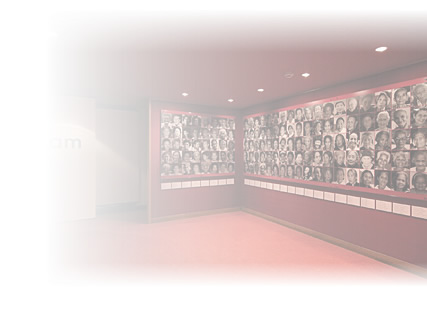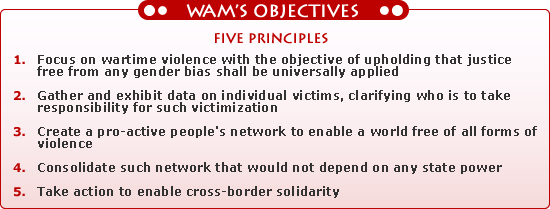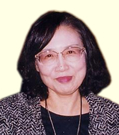About Us
 Welcome to Women’s Active Museum on War and Peace
Welcome to Women’s Active Museum on War and Peace
In this summer of 2005, which marks the sixtieth anniversary of Japan’s defeat in WWII, we are opening the Women’s Active Museum of War and Peace.
After the Women’s International War Crimes Tribunal on Japan’s Military Sexual Slavery was held in 2000, we began dreaming of a museum where all the Tribunal records and materials related to the so-called “comfort women” issue could be preserved and made available to future generations. The passion of the late Yayori Matsui, then chairperson of VAWW-NET Japan, was the driving force that led us to realize this dream. In June 2003, we established the NPO “Women’s Fund for Peace and Human Rights” and launched our “Raise 100,000,000 Yen Campaign” for the museum with an initial support fund from Yayori’s legacy.
The Women’s Active Museum of War and Peace is a place where the reality of war crimes is recorded and kept for posterity. We come here to remember historical facts about “comfort women,” and to listen to their stories. And we raise our voices and say, “Never Again, anywhere in the world.”
More than a decade has passed since the women survivors of Japan’s military sexual violence courageously began to speak out. Their stories have challenged us in many ways. They have taught us that war crimes are never rectified unless the State faces its crimes; that a genuine apology and promise to prevent recurrence from the State is an absolute necessity; that in order to overcome the past we need to keep the memory of past aggression alive, and pass it on to future generations.
Here in Japan, there are those who deny the fact of military sexual slavery, and try to evade responsibility for it. But however vigorously they may seek to deny them, historical facts can never be erased.
Please listen to the voices of the women survivors. Come and join us in asking why these things happened and are still happening, and in thinking about how we might work together to bring about a non-violent world where peace and equality are realities rather than dreams.
Five Principles

 Matsui Yayori was born in Kyoto in 1934 and grew up in Tokyo, the eldest of the six children of Christian ministers. As a high school student she contracted a severe case of tuberculosis, and was bedridden for four years. Unable to graduate from high school, she nevertheless passed the University Qualification Exam after her recovery, and was admitted to the Department of British and American Studies of Tokyo Gaikokugo Daigaku (Tokyo University of Foreign Studies). During her junior year, she left Japan to spend a year in America as an exchange student, and then went on to Europe, where she furthered her studies at the Sorbonne. On the journey home, she was shocked at the contrast between the poverty of Asia and the prosperity she had just seen in Europe and America. This first trip abroad, which gave her a new awareness of racial, ethnic, and sexual oppression, left her determined to change the inequalities of global society, and to stand always with the weakest of its members.In 1961, Matsui began her career as a reporter for the Asahi Shimbun (newspaper). She covered public health and environmental issues, such as birth defects caused by Thalidomide, and Minamata-byo (Minamata disease), a general term for the effects of mercury poisoning, so-called after the town in Kyushu where the first cases came to light. In addition, she tackled such contentious problems as Japan’s exportation of environmental pollution to other parts of Asia. After encountering the Women’s Liberation movement in America, she began to actively cover women’s issues, including the violation of women’s human rights through Japanese businessmen’s “sex tours” to other Asian nations, which led her to the problem of sexual violence against women in war and armed conflicts (the “comfort women” issue.)
Matsui Yayori was born in Kyoto in 1934 and grew up in Tokyo, the eldest of the six children of Christian ministers. As a high school student she contracted a severe case of tuberculosis, and was bedridden for four years. Unable to graduate from high school, she nevertheless passed the University Qualification Exam after her recovery, and was admitted to the Department of British and American Studies of Tokyo Gaikokugo Daigaku (Tokyo University of Foreign Studies). During her junior year, she left Japan to spend a year in America as an exchange student, and then went on to Europe, where she furthered her studies at the Sorbonne. On the journey home, she was shocked at the contrast between the poverty of Asia and the prosperity she had just seen in Europe and America. This first trip abroad, which gave her a new awareness of racial, ethnic, and sexual oppression, left her determined to change the inequalities of global society, and to stand always with the weakest of its members.In 1961, Matsui began her career as a reporter for the Asahi Shimbun (newspaper). She covered public health and environmental issues, such as birth defects caused by Thalidomide, and Minamata-byo (Minamata disease), a general term for the effects of mercury poisoning, so-called after the town in Kyushu where the first cases came to light. In addition, she tackled such contentious problems as Japan’s exportation of environmental pollution to other parts of Asia. After encountering the Women’s Liberation movement in America, she began to actively cover women’s issues, including the violation of women’s human rights through Japanese businessmen’s “sex tours” to other Asian nations, which led her to the problem of sexual violence against women in war and armed conflicts (the “comfort women” issue.)
“As she speaks of the responsibility of not knowing anger reverberates in the woman writer’s voice” This tanka poem, published in the Asahi in 1987, was written for Matsui, who was serving as Senior Staff Writer at the time. Supported by readers like the one who wrote this tanka, she had already become the first woman to serve as Tachikawa Bureau Chief and the Asahi Shimbun Asian General Bureau Correspondent. But whatever her title, she never lost sight of her true mission as a journalist-to bring to her readers the stories of those whose voices would otherwise go unheard.
After retiring from the Asahi in 1994, she founded the Asia-Japan Women’s Resource Center, which became a home base for the further development of her activities both as a feminist and as an international journalist. In 1998, she organized Violence Against Women in War Network, Japan (VAWW-NET Japan), and in 2000, proposed the “Women’s International War Crimes Tribunal on Japan’s Military Sexual Slavery” as a final reckoning to end a century of war and violence. With the cooperation of women from Japan and throughout the world, the Tribunal became a reality.
In the fall of 2002, Matsui was told that she was suffering from liver cancer. She devoted the remaining four months of her life to writing her autobiography, and realizing her plan for a “Women’s Museum of War and Peace” that would serve as a center to carry on the action she had begun. She died on December 27, 2002, leaving her entire estate to this Women’s Active Museum, which was built by the hands of the people, and founded on the principles of Matsui Yayori’s life.
